Cadex's new performance saddle is already a Grand Tour stage winner
Ridden by Michael Matthews the Amp weighs just 129g and features an integrated carbon rail and ergo centre cut-out
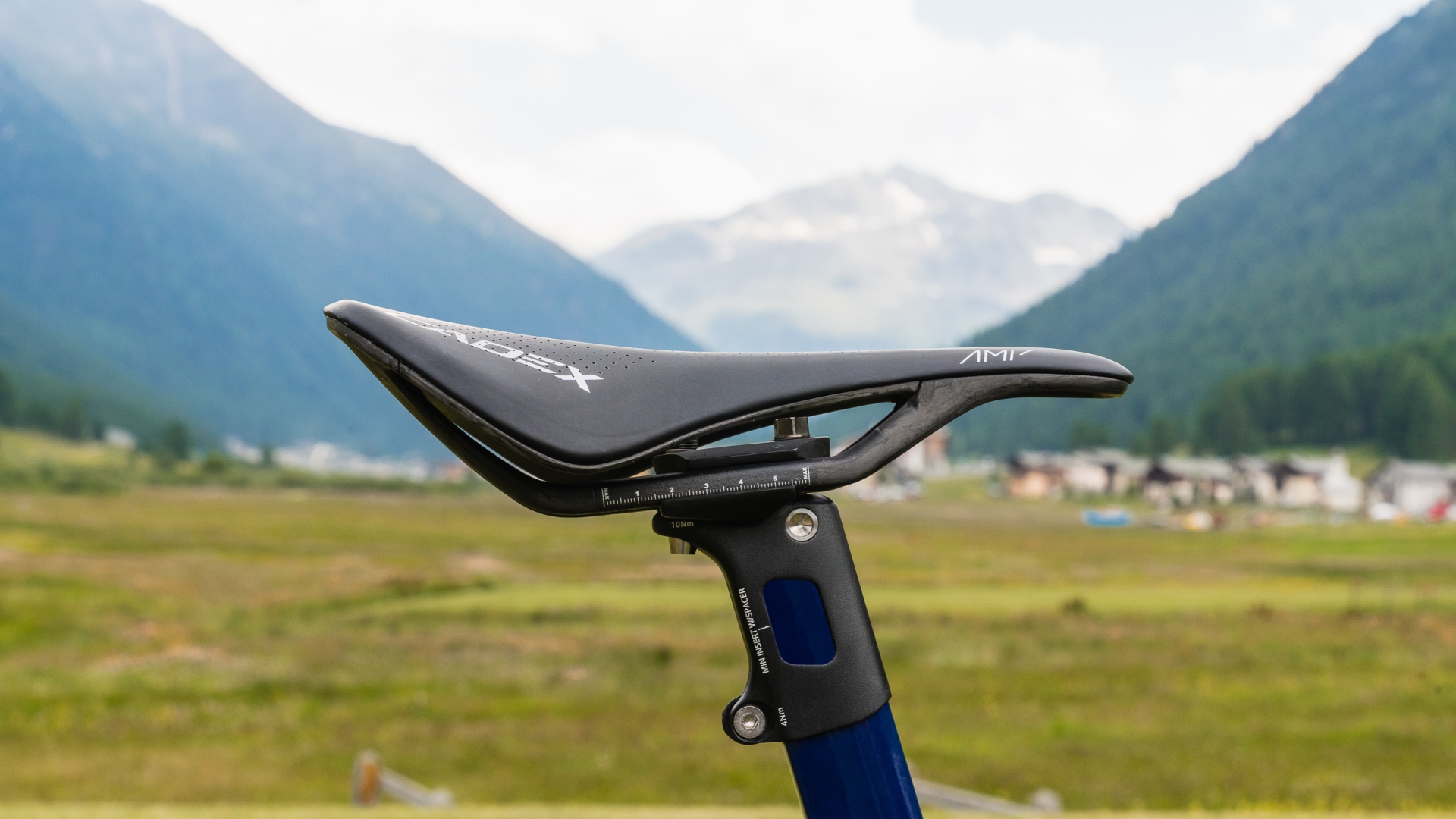
Cadex has launched a new road bike saddle - the Amp. Measuring 245mm long and 145mm wide, the model features carbon rails and weighs a claimed 129g.
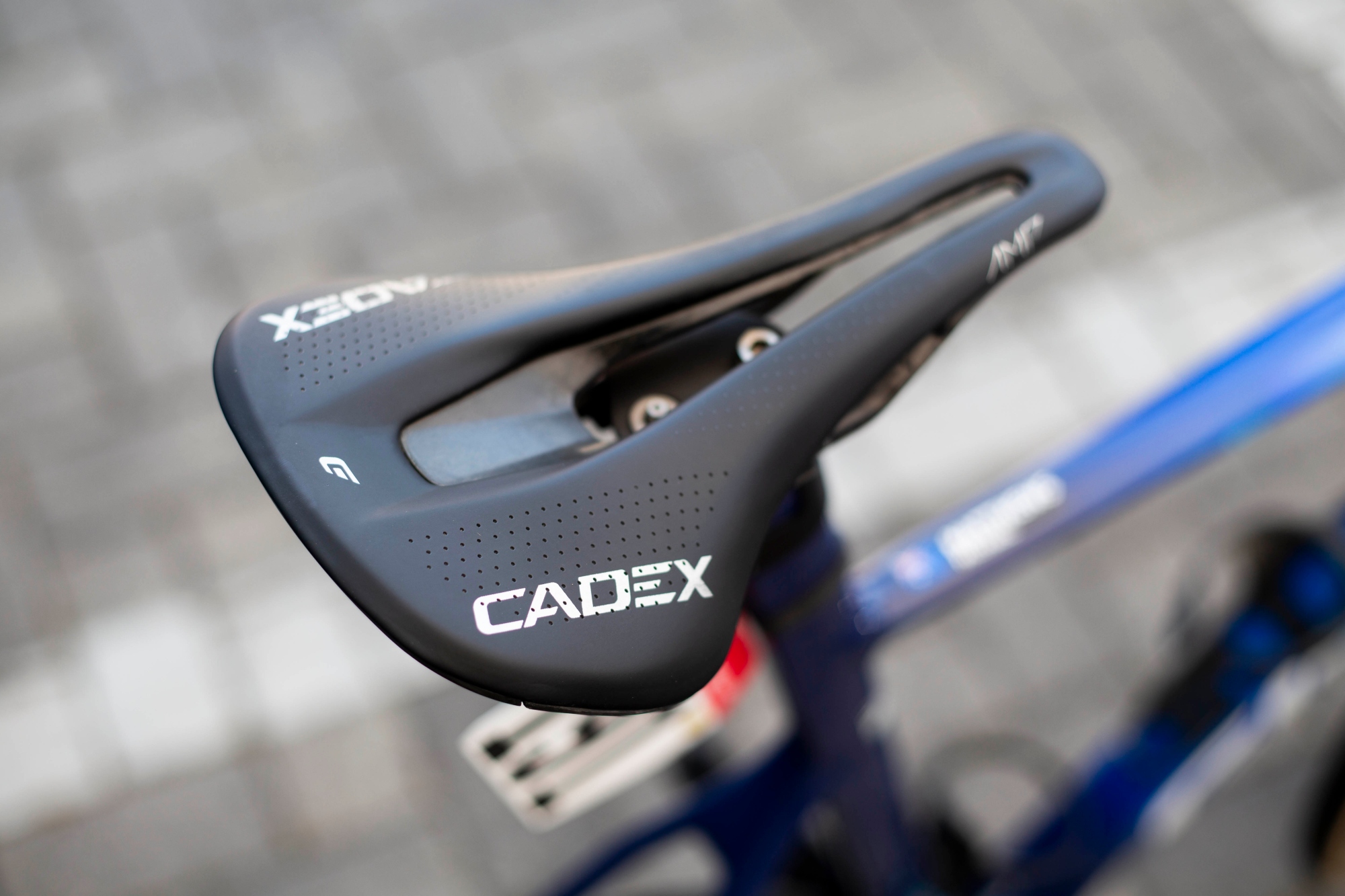
It’s already been used to good effect by WorldTour outfit Team Jayco AlUla. Michael Matthews used a prototype of the Amp as he rode to victory on Stage 3 of the 2023 Giro d’Italia and has had the saddle in play ever since.
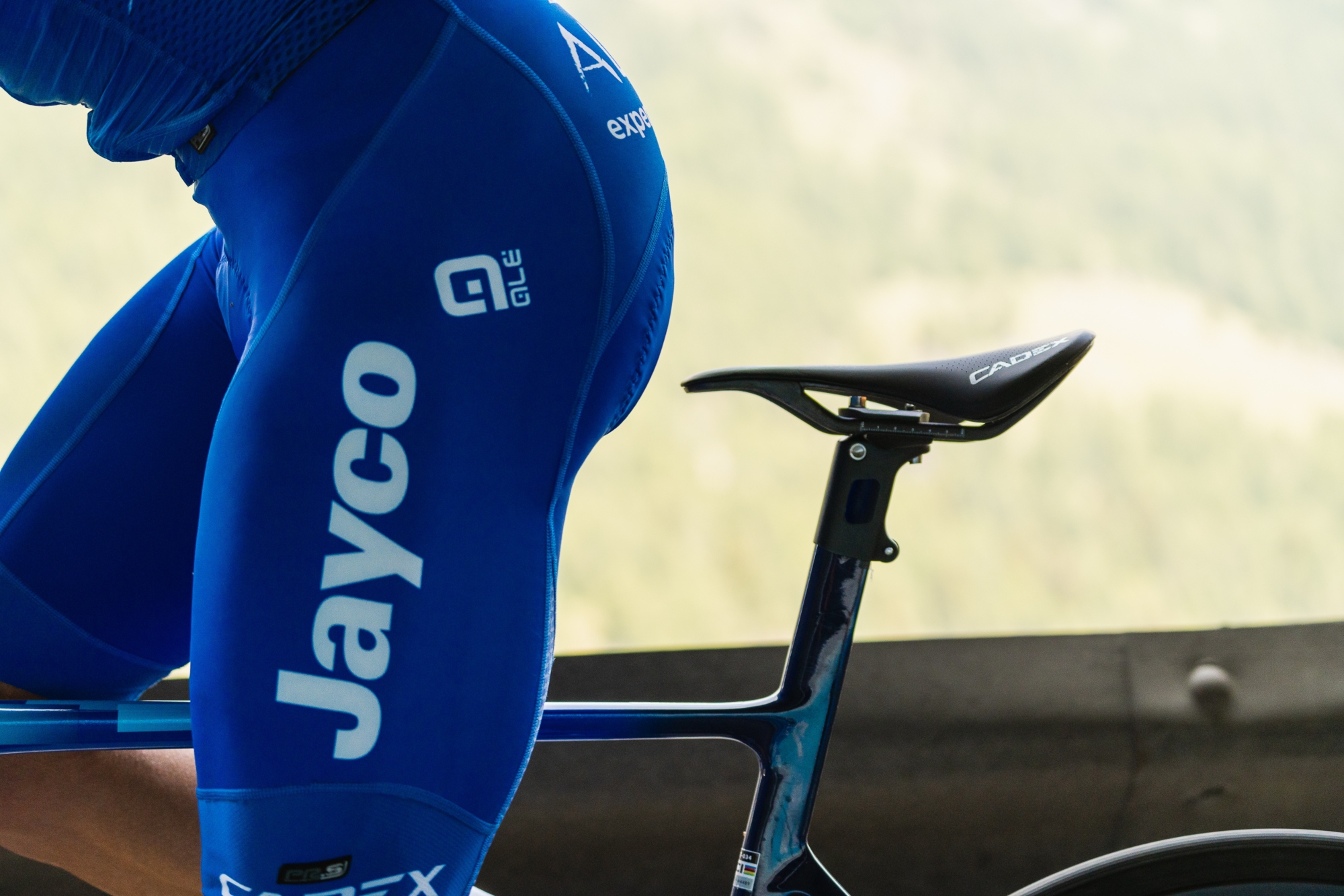
Giant Bicycles’ in-house components brand says the Amp borrows some of the core features of its popular Boost saddle - namely the composite base, the integrated rail and the Particle Flow padding - but incorporates them into a design that’s more versatile.
“The Cadex Boost saddle has been a popular choice for high-performance road riding and is a favorite for many of the pro racers we work with,” said Jeff Schneider, Global Head of Product for Cadex. “With the Amp, we wanted to build on those core features and make it a better fit for a wider range of riders.”
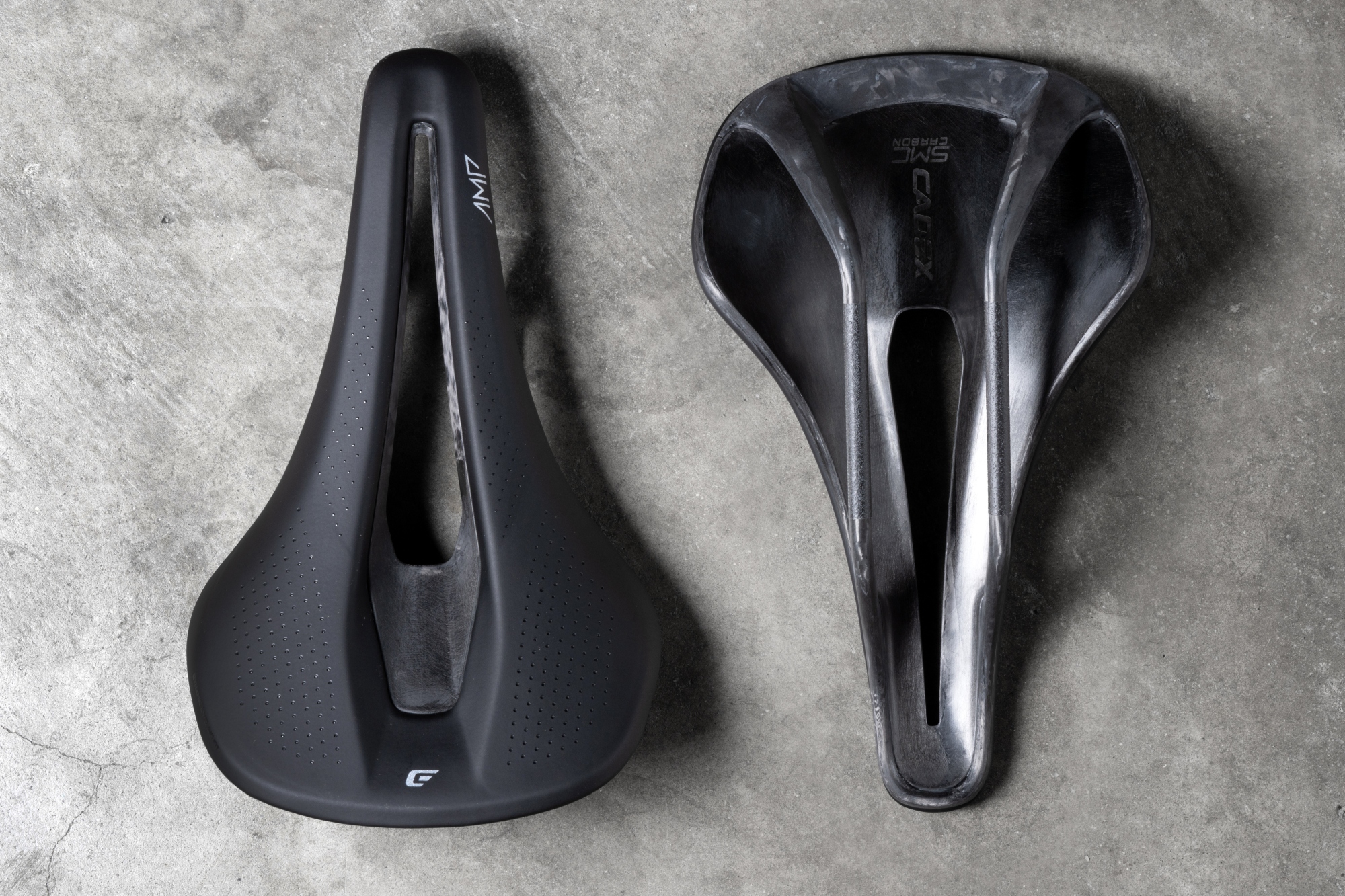
To create a more universal fit, Cadex has designed the Amp with an ergonomic rear curve that it says “improves ischial support”, alongside a side curve and a crowned shape created to offer improved pedalling clearance. Together they help push a rider back into the saddle, resulting in what Cadex describes as a “powerful and aerodynamic riding position.”
The Advanced Forged Composite base is also designed to aid power transfer balancing support with some flexibility at the wings. The truncated nose design plays its part too, designed to reduce inner thigh pedaling interference, which is a consideration for all of the best bike saddles.
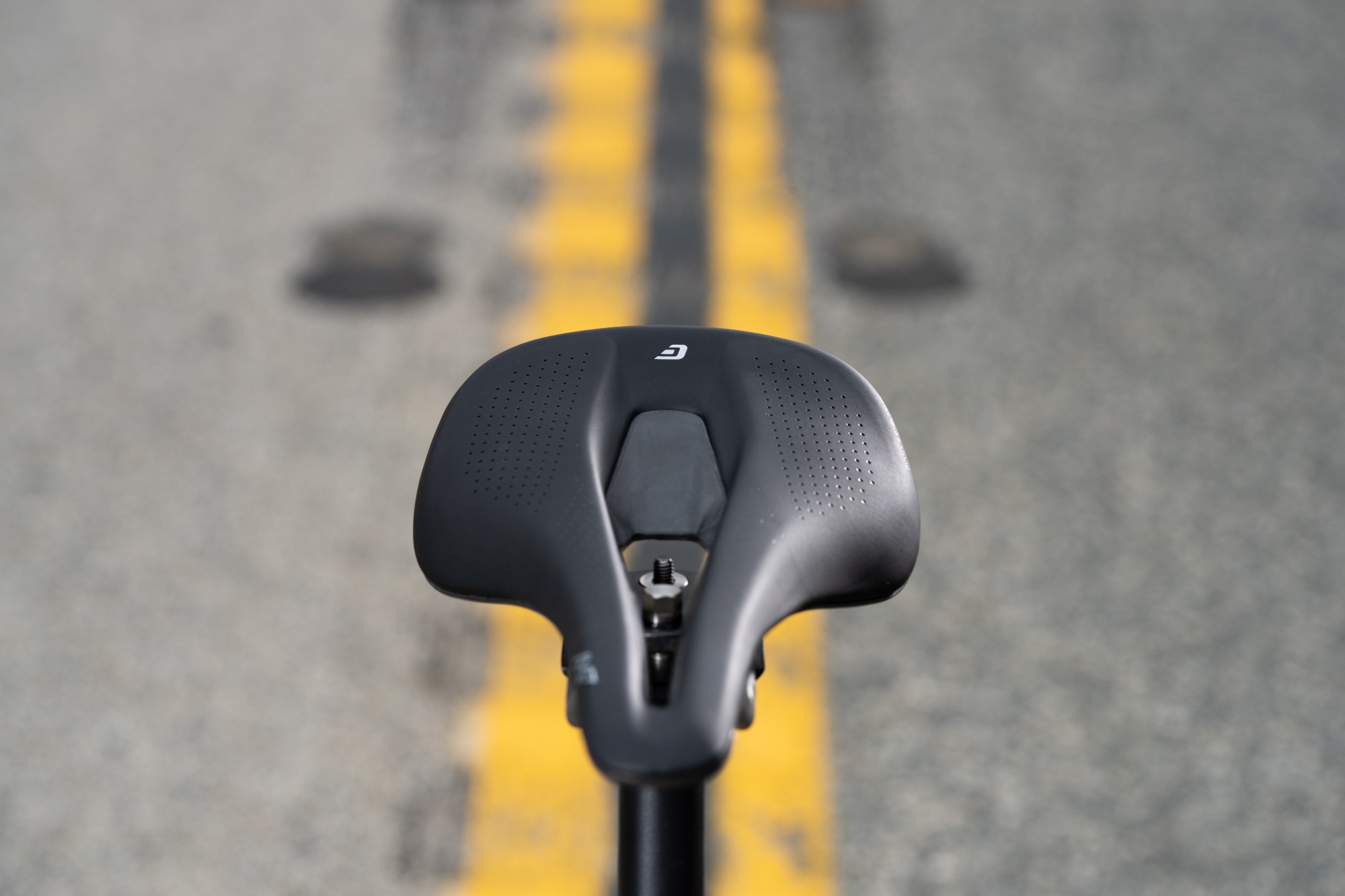
Race-orientated saddles are naturally performance focused, which means they need to not only promote an aerodynamically enhanced and powerful riding position but are required to be comfortable too. Again, the Amp’s composite base and carbon rails play a part here. By positioning the rail attachment away from the main contact points with the rider’s sit bones, Cadex says it both alleviates pressure points “common with traditional saddle construction” and helps to reduce road chatter.
Padding of course plays an integral part in the saddle's comfort. The Amp uses a blend of Cadex’s high-elasticity ‘Particle Flow’ padding, which is built directly into the upper, and ‘Reactive Foam’. Together they are said to help evenly distribute a rider’s weight across a broader area of the saddle as well as dampen vibrations. Last, but certainly not least, the Amp uses a large centre cut out to help relieve pressure on those soft tissue areas.
The Amp sports a $350-pricetag and should be available from late August.
For more information visit www.cadex-cycling.com

Thank you for reading 20 articles this month* Join now for unlimited access
Enjoy your first month for just £1 / $1 / €1
*Read 5 free articles per month without a subscription

Join now for unlimited access
Try first month for just £1 / $1 / €1
Get The Leadout Newsletter
The latest race content, interviews, features, reviews and expert buying guides, direct to your inbox!
Luke Friend has worked as a writer, editor and copywriter for twenty five years. Across books, magazines and websites, he's covered a broad range of topics for a range of clients including Major League Baseball, the National Trust and the NHS. He has an MA in Professional Writing from Falmouth University and is a qualified bicycle mechanic. He has been a cycling enthusiast from an early age, partly due to watching the Tour de France on TV. He's a keen follower of bike racing to this day as well as a regular road and gravel rider.
-
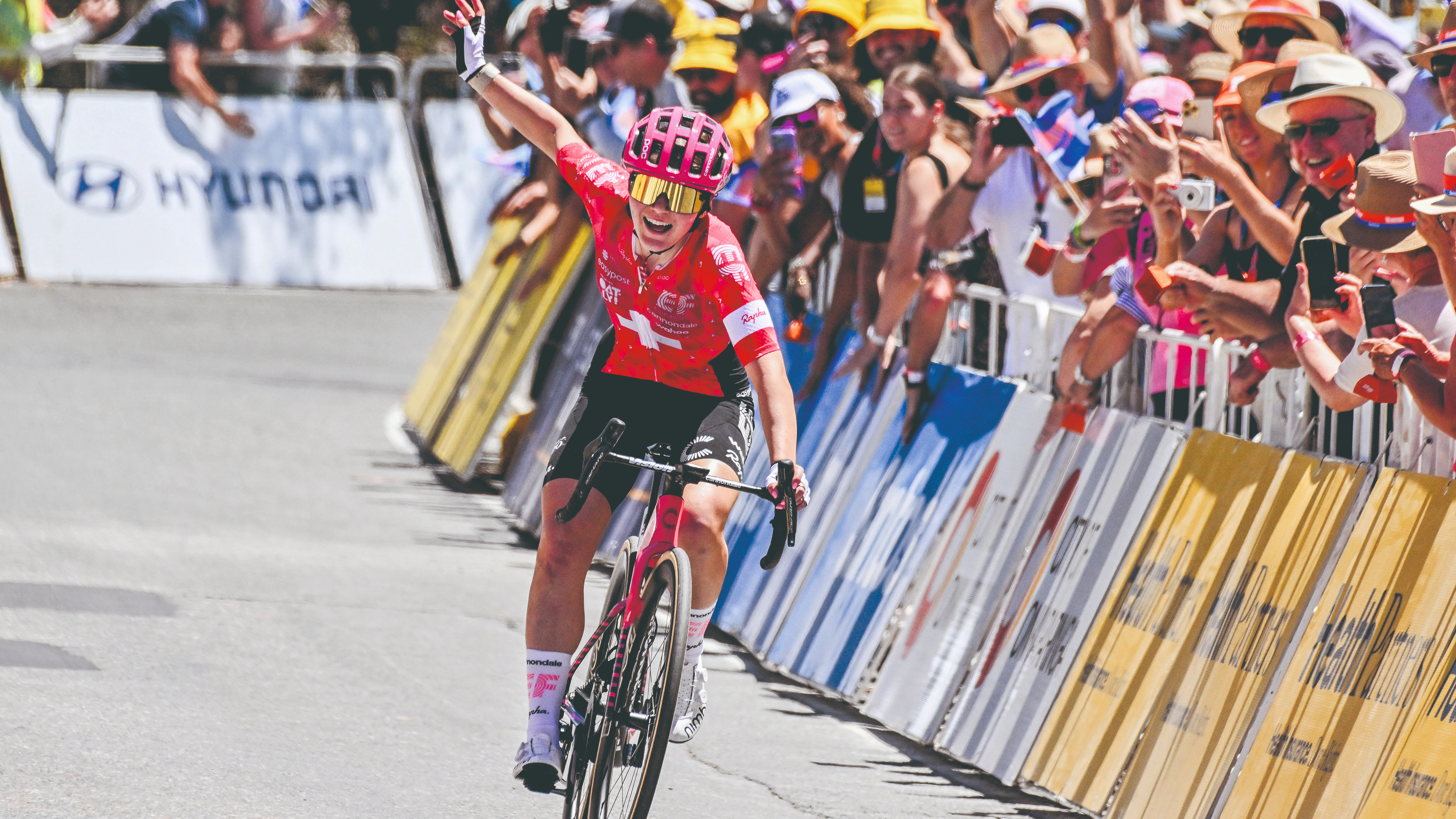 How do the pros train? Noemi Rüegg's 26 hour training week
How do the pros train? Noemi Rüegg's 26 hour training weekWinner of this year’s Tour Down Under, the EF Education-Oatly rider is a climber whose talent is taking her to the top
By Chris Marshall-Bell
-
 Save £42 on the same tyres that Mathieu Van de Poel won Paris-Roubaix on, this Easter weekend
Save £42 on the same tyres that Mathieu Van de Poel won Paris-Roubaix on, this Easter weekendDeals Its rare that Pirelli P-Zero Race TLR RS can be found on sale, and certainly not with a whopping 25% discount, grab a pair this weekend before they go...
By Matt Ischt-Barnard